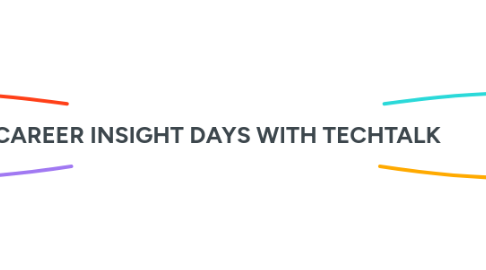
1. The problem
1.1. LANDING A JOB IN 2025 IS 10X HARDER THAN IT WAS 5 YEARS AGO
1.1.1. JOB MARKET IN 2020
1.1.1.1. Market less saturated
1.1.1.2. Traditional job search methods
1.1.1.3. Focus on qualifications
1.1.1.4. Standard interview process (less stages)
1.1.2. JOB MARKET IN 2025
1.1.2.1. Market more saturated
1.1.2.2. Digitalization of job search
1.1.2.3. Networking essential
1.1.2.4. Emphasis on skills and adaptability
1.1.2.5. Behavioural interviews
1.1.2.6. Increased automation leading to fewer jobs
1.1.3. 5 KEY PILLARS
1.1.3.1. PILLAR 1 - Building an irresistable CV
1.1.3.2. PILLAR 2 - Optimising LinkedIn profile
1.1.3.3. PILLAR 3 - Networking effectively
1.1.3.4. PILLAR 4 - Building a successful application strategy
1.1.3.5. PILLAR 5 - Nailing every interview question
2. Pillar 1 - CV
2.1. THE CV IS THE FOUNDATION TO YOUR APPLICATION. **It takes a recruiter 6-10s to look at it.**
2.1.1. 3 BIGGEST MISTAKES
2.1.1.1. 1 - Sending generic CVs
2.1.1.2. 2 - Poor formatting (Not ATS friendly)
2.1.1.3. 3 - Having multiple pages
2.1.2. THE KEY TO A GOOD CV
2.1.2.1. Your CV is not about writing your full life, but selecting what is relevant to keep for the position you're applying for
2.1.2.1.1. **GETTING PAST THE ATS**
2.1.2.1.2. **THE BASICS OF FORMATTING**
2.1.2.1.3. PERSONAL INFORMATION
2.1.2.1.4. SUMMARY
2.1.2.1.5. SKILLS
2.1.2.1.6. WORK EXPERIENCE
2.1.2.1.7. EDUCATION
2.1.2.1.8. OTHER
2.1.2.1.9. CV TEMPLATES
2.1.3. GOOD VS BAD CV
2.1.3.1. EXAMPLE
3. Pillar 2 - LinkedIn
3.1. 95% OF RECRUITERS LOOK FOR CANDIDATES ON LINKEDIN
3.1.1. **THE IMPORTANCE OF LINKEDIN**
3.1.1.1. Gaining company insights
3.1.1.2. Networking
3.1.1.3. Tapping into the hidden job market
3.1.1.4. Searching for jobs
3.1.2. **GETTING TO KNOW YOU**
3.1.2.1. BACKGROUND IMAGE
3.1.2.1.1. A company banner
3.1.2.1.2. Photo of your city
3.1.2.1.3. Something personalized
3.1.2.2. PROFILE PICTURE
3.1.2.2.1. Avoid using pictures of your graduation day, as it might make you look too young
3.1.2.2.2. Keep the background simple and not too busy
3.1.3. OPTIMISING YOUR PROFILE FOR SEARCH
3.1.3.1. HEADLINE
3.1.3.1.1. [JOB] at [COMPANY] | [SKILL 1] | [SKILL 2] | [SKILL 3]
3.1.3.2. SUMMARY
3.1.3.2.1. Your summary is the perfect opportunity for you to expand on the catchy headline that you've created for yourself
3.1.3.2.2. It's a chance for you to say a little bit more about yourself, your skills, and what you're looking for
3.1.3.3. WORK EXPERIENCE
3.1.3.3.1. Your Experience should look very much like a resume but not exactly the same
3.1.3.3.2. Take your CV bullet points and make into a short paragraph
3.1.3.4. SKILLS
3.1.3.4.1. **Skill is where you optimsie for seach**
3.1.3.4.2. Look for 5 - 10 roles and see which skills you need to add
3.1.3.4.3. Add the most common skills to your profile
3.1.3.4.4. Link skills to the jobs in your profile! 5-10 for each of them.
3.1.3.4.5. LINKEDIN SKILL BOT
3.1.4. **BUILDING YOUR CREDIBILITY**
3.1.4.1. EDUCATION
3.1.4.1.1. Only include education at the top of the profile if you don't have work experience
3.1.4.2. FEATURED SECTION
3.1.4.3. CERTIFICATIONS
3.1.4.4. RECOMMENDATIONS
3.1.4.4.1. Go and ask people you have worked with to write you a review
3.1.4.4.2. Add at least one a year to keep it up to date
3.1.4.5. COURSES
3.1.4.6. LANGUAGES
3.1.5. BONUS TIP
3.1.5.1. Build your personal brand
3.1.5.1.1. Post about your interests and achievements on Linkedin
3.1.5.1.2. Share something interesting that happens in the news and post about it!
3.1.5.1.3. Share your thoughts on industry trends etc…
3.1.5.1.4. Roxanne's personal story
4. Pillar 3 - Networking
4.1. NETWORKING IS HOW YOU STAND OUT FROM EVERYONE ELSE IN THE CROWD
4.1.1. THE IMPORTANCE OF NETWORKING
4.1.1.1. Stand out and Increase visibility to get your application noticed
4.1.1.1.1. SLIDES
4.1.2. **THE 3 KEY STAKEHOLDERS**
4.1.2.1. Recruiter
4.1.2.1.1. The person responsible for hiring for the role - could be internal or external, but there is ALWAYS someone sourcing
4.1.2.2. Hiring manager
4.1.2.2.1. The person that will manage the position they're hiring for. They're the ones making the final decision
4.1.2.3. Department peers
4.1.2.3.1. The people that will work with you on the day-to-day and can have an influence on who is getting hired for the role (they're usually part of the interview process)
4.1.3. NETWORKING ON LINKEDIN
4.1.3.1. Step 1: Go to the LinkedIn company page
4.1.3.2. Step 2: Find people to connect with
4.1.3.3. Step 3: Send a personalized message
4.1.3.3.1. MESSAGE TEMPLATES
4.1.3.4. Step 4: Set up some time to speak
4.1.3.5. Step 5: Do your research before the call
4.1.3.6. Step 6: Jump on a call & take notes
4.1.3.7. Step 7: Follow up after the call
4.1.3.7.1. MESSAGE TEMPLATES
4.1.3.8. POLL QUESTIONS
4.1.4. NETWORKING AT EVENTS
4.1.4.1. Preparation - Before attending a networking event, do your research.
4.1.4.2. Start with small talk - Approach people with a friendly greeting and introduce yourself.
4.1.4.2.1. NETWORKING QUESTIONS
4.1.4.3. Listen actively - When networking in person, it's important to listen actively to the person you're talking to
4.1.4.4. Ask for advice, not a job - When networking in person, don't ask for a job outright.
4.1.4.5. If you want to ask for a referral, don’t be too intrusive
4.1.4.6. Follow-up after the event
4.1.4.6.1. MESSAGE TEMPLATES
4.1.5. TOOLS FOR NETWORKING
4.1.5.1. NETWORKING TRACKER
4.1.5.2. RESLINK
4.1.5.2.1. LINK
